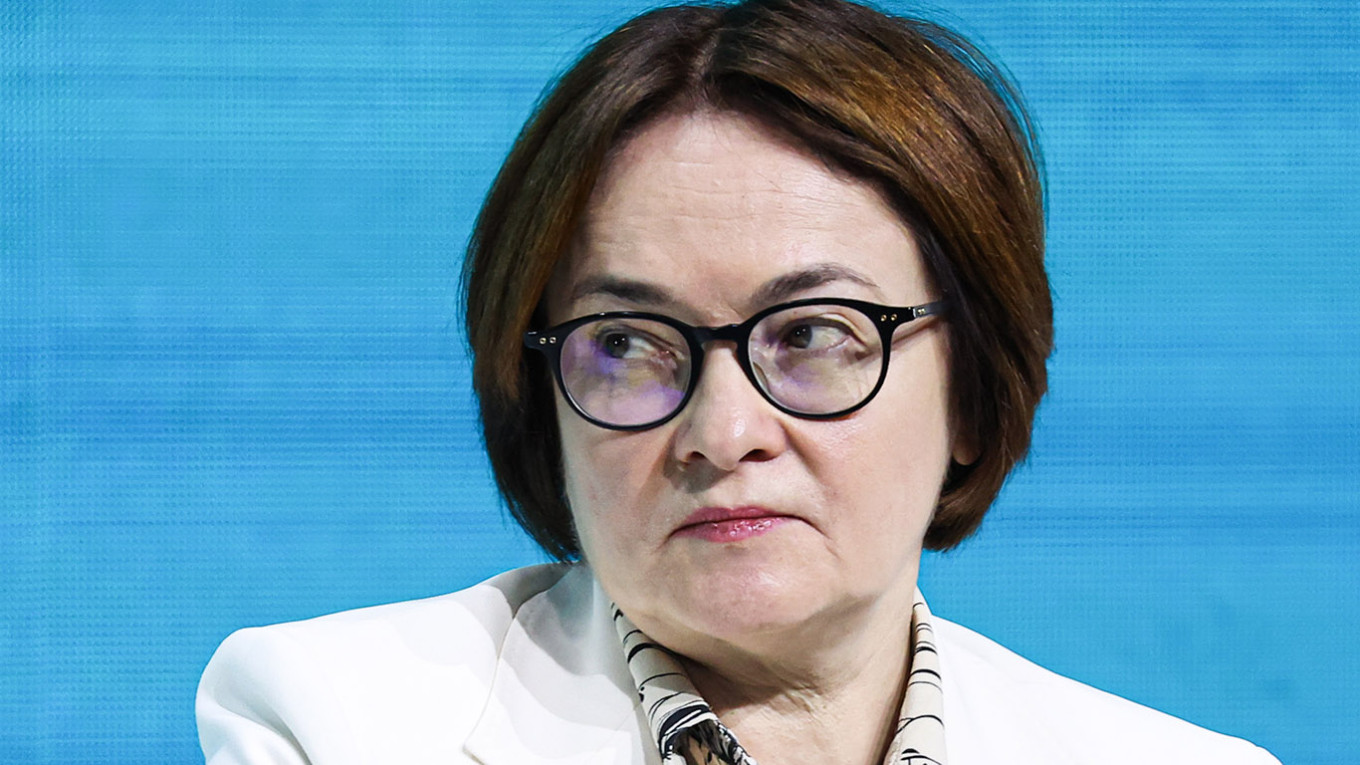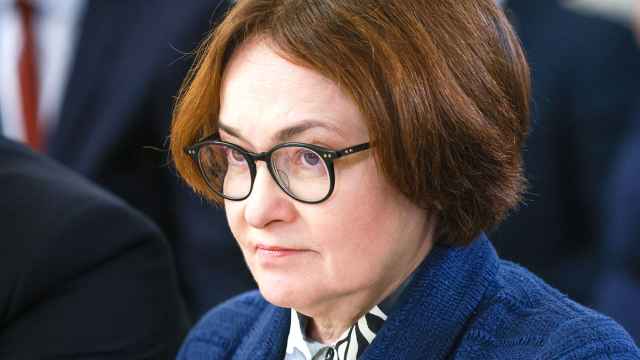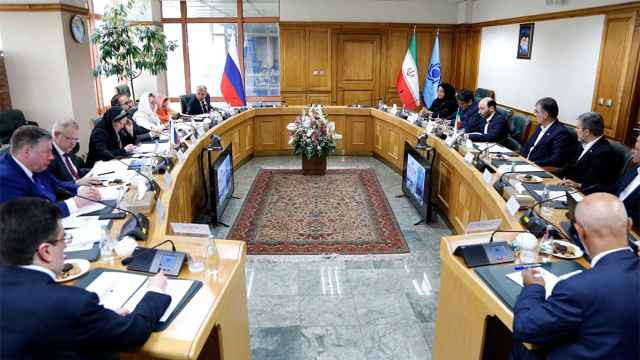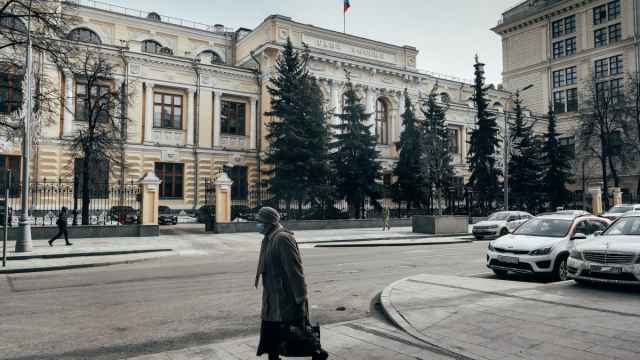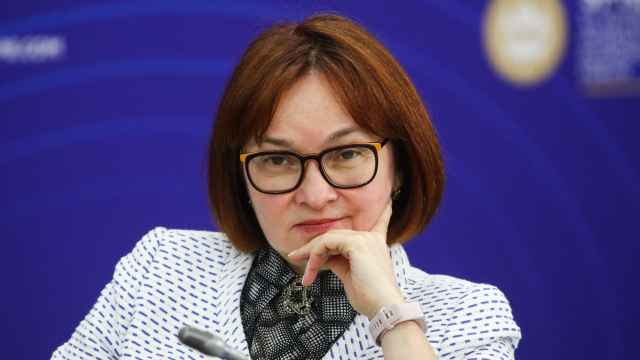Elvira Nabiullina, the head of Russia's Central Bank, has long been the epitome of the technocratic facade of Vladimir Putin's rule.
In her post since 2013, she has been credited with ensuring economic stability and as being the chief architect of Moscow's response to Western sanctions.
But as Russia's war economy faces the challenge of runaway inflation, politicians and businesses are struggling to agree on the right course to meet the growing challenges of higher living costs and business hurdles.
How big is Russia’s inflation problem?
Russia's inflation is expected to reach 8-8.5% this year, official projections show, up one percentage point from 2023 and 200%, or more, of the Central Bank's target rate of 4%.
Other estimates suggest inflation may be even higher, with research company ROMIR showing a 22.1% year-on-year inflation rate in September, while official data showed a 9.67% increase.
The ROMIR index is based on a broad basket of consumer goods (FMCG), mostly consisting of food and household chemicals.
High inflation is a key indicator that the Russian economy is overheating, analysts say.
Simply put, there is more money, including credit, available for people and businesses to spend, and there are fewer available goods and services to meet that demand.
Demand for goods and services is fueled by Russian government spending to boost war production and help businesses make up for the exodus of Western companies.
Meanwhile, producers cannot easily keep up with the demand as they are constrained by labor shortages and rising costs linked to Western sanctions, such as through logistics issues or payment problems.
What is the Central Bank doing about it?
Against a backdrop of increasing inflation, the Central Bank raised the key interest rate to an all-time high of 21% on Oct. 25.
The Central Bank indicated that it may be preparing for another rate hike in December.
A rise in the key interest rate will make it more expensive for businesses and individuals to borrow, thereby reducing demand. It also incentivizes consumers to hold money in savings accounts or government bonds, rather than spend it.
For example, an individual can keep money in a savings account for 12 months and earn 21-3% interest, while a one-year consumer loan at market rates approaches 23%.
Similarly, yields on five-year Russian government bonds (OFZ), considered a low-risk investment, reached a level of 18.6%, compared with 11-12% in January 2024.
In addition, the Central Bank has been lobbying the government to reduce the availability of government-subsidized loans and tighten requirements for borrowers.
For example, the Central Bank and the Finance Ministry advocated to cancel Russia's subsidized mortgage program.
The Central Bank also limited the number of microfinance loans to one per person and required banks to reduce their dependence on a few large groups of companies.
All of this — the increase in the key interest rate and the tightening of access to credit — is aimed at cooling demand by enough to give Russian producers time to adjust and avoid sharp price increases, thus curbing inflation.
In October, Russian banks issued 871 billion rubles (about $8.7 billion) in loans, 19.6% less than in September and 43.3% lower than in October last year, business daily Vedomosti said.
The impact of the monetary policy change may take 3-5 months to affect the real economy, the Central Bank said.
What do critics say?
Critics of the Central Bank policy say it hurts companies and investment.
“As a result of the Central Bank's actions, the Russian economy is actually facing stagflation — simultaneous stagnation (or even recession) and high inflation,” the TsMAKP think tank said in its recent report.
The report warned of the risk of mass bankruptcies, citing the share of manufacturing companies that said high interest rates were hurting their output at over 40% compared to 20-25% in previous years.
Critics of the policy argue that elevated interest rates will not cool Russian inflation, which is caused by idiosyncratic factors such as seasonal price increases. Instead, it will hit production and investment hard, thereby burdening manufacturers with additional expenses and reducing economic growth, they say.
This alarmism is not limited to TsMAKP, whose head, Dmitry Belousov, is the brother of Defense Minister Andrei Belousov.
Interest rates are beginning to hurt companies' earnings margins, threatening to make even such lucrative business as arms exports unprofitable, warned Sergei Chemezov, head of the state defense corporation Rostec.
“If we continue to work like this, we will have almost the majority of enterprises going bankrupt. Unfortunately, I don't know of any business with such profitability — more than 20% ... even the arms trade doesn't provide this level of profitability,” Chemezov lamented.
Other critics include aluminum tycoon Oleg Deripaska and Alexei Mordashov, head of the steel company Severstal.
Is Nabiullina feeling the heat?
Despite criticism, the Central Bank is unlikely to reverse course.
While Nabiullina admits that measures to curb inflation would slow economic growth, she insists that her policies could contain price rises and restore price stability.
Nabiullina cited the Central Bank's own research of 300,000 Russian companies and said that debt servicing costs average up to 5% of expenses.
These costs were less dire than the negative consequences of uncontrolled price increases and would not lead to mass bankruptcies.
The Central Bank also said that tougher lending conditions in the short term could even be a “blessing” for the economy to weed out inefficient companies.
"We are now at a turning point. According to an analysis of banks and companies, in the coming months, we can expect a general slowdown in the growth of corporate loans and a decrease in its contribution to the growth of aggregate demand. With some delay — and delays are very important here — this will lead to a slowdown in current inflation," Nabiullina promised on Tuesday.
The Kremlin is unlikely to intervene in the country's monetary policy.
Vladimir Putin, anxious to avoid the unpredictable inflation of the 1990s, seems intent on keeping inflation in check at all costs.
In an April speech, Putin cited Turkey as a country where leaders once failed to make the tough decisions in time to tackle inflation head-on, resulting in persistent double-digit inflation.
“They have crossed a threshold and now they can't cope with [inflation] … So we need to be very careful here,” Putin said.
Rather than soften Nabiullina's overall policy, the Kremlin is likely to continue to target aid at key parts of the economy, such as the military-industrial complex and military workers and servicemen.
Meanwhile, sectors of the economy that are not subsidized by the government and rely on credit at market rates are the most vulnerable.
Russian economist Yelena Rogova cited construction and trade, especially wholesale trade, as well as the restaurant and hospitality sector as those most negatively affected by the rate hike.
What happens next?
If Moscow is serious about maintaining single-digit inflation, the Central Bank's action is arguably the only lever at its disposal.
Reducing Russia's budget spending could certainly cool the Russian economy, but that is unlikely amid the Ukraine war, which is not expected to end soon. So the Central Bank is left to balance the pro-inflationary forces of the war economy as best it can.
Broadly in line with the Central Bank's own forecasts, analysts expect Russia's GDP to slow next year, with a moderate decline in inflation.
“We are likely to see a slowdown at the end of this year and an even stronger slowdown in the economy next year, but not a recession, due to the high level of government spending,” Anton Tabakh from the Expert RA credit rating agency said.
Tabakh also said it was too early to talk about the threat of stagflation. For this to happen, the economy would have to show slowing growth and rising inflation for at least three months, which is not currently observed, he noted.
The Central Bank is trying to eliminate the overheating in the economy quickly, but it "will not be possible to do it painlessly," Rodion Latypov, chief economist at Russia's second-largest lender VTB, said at a recent seminar hosted by the Russian School of Economics.
"According to my calculations, the output gap [the percentage by which the economy exceeds its sustainable potential] is now 2-3%, and if the economy's potential grows by 2% next year, the gap will not be eliminated next year without a slight recession," Latypov said.
A Message from The Moscow Times:
Dear readers,
We are facing unprecedented challenges. Russia's Prosecutor General's Office has designated The Moscow Times as an "undesirable" organization, criminalizing our work and putting our staff at risk of prosecution. This follows our earlier unjust labeling as a "foreign agent."
These actions are direct attempts to silence independent journalism in Russia. The authorities claim our work "discredits the decisions of the Russian leadership." We see things differently: we strive to provide accurate, unbiased reporting on Russia.
We, the journalists of The Moscow Times, refuse to be silenced. But to continue our work, we need your help.
Your support, no matter how small, makes a world of difference. If you can, please support us monthly starting from just $2. It's quick to set up, and every contribution makes a significant impact.
By supporting The Moscow Times, you're defending open, independent journalism in the face of repression. Thank you for standing with us.
Remind me later.



